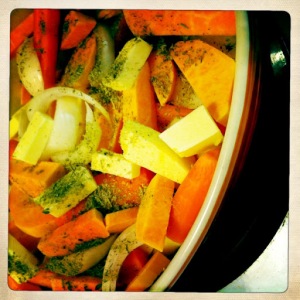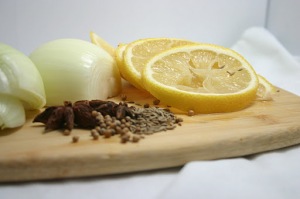Yogurt is not just for active, young females wearing capris smiling ecstatically about regulating their bowels, despite what marketing may have indicated. Your teeth may not be perfectly white, you may not be dancing in a big white room, but you may enjoy a creamy milk product minus the lactose and the benefits of probiotics. And boy howdy are there benefits.
It may come to no surprise to you that you have more bacterial cells than human cells in and on you at this moment. I think the science/health community has used that shock statement enough times, but it still gets me thinking every time. People just look so, I don’t know, human. It’s hard to imagine an underwater garden of life flourishing right in the cradle of our pelvises. It’s ball-parked that there are about 100 trillion microrganisms that hail from 500 species in the bowel of the average joe. It’s even harder to imagine the massive impact these bacteria have on our day-to-day lives. Changes in microbiota can create an inflammatory state, possibly leading to things as dramatic as obesity and late-onset autism. Inflammation plays a big role in a lot of chronic diseases, and probiotics seem to play a role in reducing or preventing that inflammation.
Consuming probiotics regularly can support a healthy gut flora, which leads to a whole host of benefits, including treatment of IBS, reduction in cavities, improved nutrient absorption at the level of the gut, and protection from colon cancer. Plus, well-fermented foods have an acidic, tangy taste that can really add dimension to otherwise flat or boring meals.
Buying proper probiotic foods from the health store is super freaking expensive. Trying to keep up with our yogurt consumption requires us to buy a huge tub of it, which takes up precious real estate in our fridge and really adds up. So I’ve started to make our yogurt. “Make” feel like a strong word because it’s so passive and easy. I’d rather say I’ve started to “let yogurt happen”.
This is almost embarrassing as a recipe because it is so easy. You are going to need some pre-made yogurt to get the party started, so you need to make sure that the yogurt you buy has active cultures (buying from the health food store will pretty much garuntee this). I’m giving you two options too- the really easy one, and the very slightly more involved one which results in a thicker final product. This is a “warm weather” recipe because it works best in above 20 degrees C (if you have a very good oven, you could set it to 100 degrees F and set it in and that would work, but my oven is waaaay to unpredictable for this). I have some experimenting to do with my last years semi-dangerous heating-pad/huge pot solution to make it easier to make during the winter, so I will keep you posted. So far I’m experimenting with my slow cooker on “warm” setting as a water bath, and a standard cooler filled with some hot water. May the rigorous scientific experiment begin! In the meantime, make this while there is still some sun in the sky, and enjoy some homemade super cheap yogurt.
Straight-Up Yogurt
1 L whole milk
1 Tbsp (15 mL) plain yogurt with live cultures
1) Clean out a glass 1 L (1 quart) jar thoroughly. Take some boiling water and swish it around the inside (warm up the jar first a bit, we don’t want broken glass up in here) to sterilize it. Without touching the inside with your fingers (it is now sterile!), allow it to sit and cool.
2) Pour in the milk. Mix in the yogurt culture with a very clean spoon. Place the lid on, and very loosely screw it on, so that it’s not sealed.
3) Place in a warm part of your house. For me, that’s on the kitchen table where it gets a good bit of sun warmth, or on top of the fridge where the motor gets a little heat going. For you, it might be in the oven with the light turned on (remember that it’s in there when you go to preheat it!). It might just be on the counter.
4) Leave in your warm spot. Do not disturb it or shake it. Come back in 12-24 hours to check. If you are lactose intolerant, you are going to want to go 24 hrs to let all the lactose get digested. The yogurt should have thickened up (it will still be less thick than commercial yogurt) and have a tangy taste. IF THERE IS ANY MOLD (I have never ever had this): start again. Do not consume.
5) Rejoice and eat yogurt. Use this batch as the starter for your next lot! Try and use it to start the new batch within the week so it is still fresh.
Thicker-than-Ever Yogurt
You are going to want to follow the same basic idea as the recipe above, but with two changes.
1) On the stove top, heat your 1 L of milk until it starts to form little bubbles on the surface. For those of you who have thermometers (which should really be all of you especially if you are inexperienced in the kitchen. Getting off soapbox) you are going to want it to hit about 82 degrees C (180 degrees F). You’re not looking for a full boil, just some steam action.
2) Allow to cool to about 43 degrees C (110 degrees F). For those of you without thermometers, it should be still a little hot, but not so hot that you couldn’t comfortable hold a super-ridiculously-clean finger in it (according to Sandor Katz). Stir in your yogurt culture.
Follow steps 3) and 4) above.
5) To get this even thicker, you can strain your yogurt through cheesecloth. Line a strainer or colander with 3-4 layers of cheese cloth. Place the strainer/colander over a bowl. Gently pour in your yogurt. You can gently twist the cheese cloth around it to speed up the process. Place something over it to keep it clean, and come back to check it after it’s been hanging out and straining for 1-3 hrs. I usually just do 1 hr.
6) Carefully scrape the yogurt out of the cheesecloth into a container. After straining, there may be a slight ricotta-like texture to the yogurt. If there is, just give your whisking muscles a good workout and you should get creamy, thick yogurt.
8) That liquid that came out of the yogurt is called “whey” (heard of whey powder?). You can use whey to jump-start all sort of other fermentation adventures, or you can use it in cooking/baking in place of water/milk. Refrigerate it if you have no plans to use it immediately.
9) If you want to make it even richer, you can add a small amount of heavy cream to really bring out the creaminess. 2 Tbsp- 1/4 c should be plenty!




































